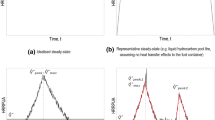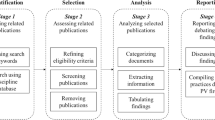Abstract
In view of the high sensitivity and high selectivity of photoacoustic technology, a compound fire alarm system used for detecting smoke particles and carbon monoxide was designed on the basis of the photoacoustic spectrometry principle. The system uses an infrared laser with a central wavelength of 1579 nm as the light source, adopts wavelength modulation technology to modulate the continuous light source, and moves the inspection frequency to high frequency with lower noise by integrating harmonic detection technology, thus realizing a measurement of the photoacoustic signal. Concurrently, the system obtains the CO concentration and extinction coefficient of smoke particles via inversion by using the measured scattered light intensity data combined with a certain algorithm. A test was carried out on the system by using three small-scale experiments, namely, cotton rope smoldering fire, polyurethane foam fire and sandalwood smoldering fire. The results show that the CO gas concentrations and extinction coefficient of smoke particles produced by these three experiments are well detected. The CO detection limit of the system was 2.98 ppm. The test results also show that pure powder (used for simulating particles) or pure CO gas will not trigger the system alarm, so unnecessary alarms caused by traditional fire detectors can be avoided and the reliability of the fire alarm can be improved.







Similar content being viewed by others
References
Barillo DJ, Goode R (1996) Fire fatality study: demographics of fire victims. Burns 22(2):85–88.
Karter MJ (2014) Fire loss in the United States during 2013. National Fire Protection Association Fire Analysis and Research Division.
Hagen B, Milke JA (2000) The use of gaseous fire signatures as a means to detect fires. Fire Saf J 34:55–67.
Besson JP, Schilt S, Thevenaz L (2004) Multi-gas sensing based on photoacoustic spectroscopy using tunable laser diodes. Spectrochim Acta A 60:3449–3456.
Jackson MA, Robins I (1994) Gas sensing for fire detection: measurements of CO, CO2, H2, O2 and smoke density in European standard fire tests. Fire Saf J 22:181–205.
Nebiker PW, Pleisch RE (2001) Photoacoustic gas detection for fire warning. Fire Saf J 36: 173–180.
Chen T, Su GF, Yuan HY (2005) In situ gas filter correlation: photoacoustic CO detection method for fire warning. Sensor Actuat B 109:233–237.
Wang JW, Wang HL (2014) Tunable fiber laser based photoacoustic gas sensor for early fire detection. Infrared Phys Technol 65:1–4.
Keller A, Ruegg M, Forster M et al. (2005) Open photoacoustic sensor as smoke detector. Sensor Actuat B 104:1–7.
Tavakoli M, Tavakoli A, Taheri M et al. (2010) Design, simulation and structural optimization of a longitudinal acoustic resonator for trace gas detection using laser photoacoustic spectroscopy (LPAS). Opt Laser Technol 42:828–838.
Fischer C, Sorokin E, Sorokina IT et al. (2005) Photoacoustic monitoring of gases using a novel laser source tunable around 2.5 μm. Opt Laesr Eng 43:573–582.
Kuusela T, Peura J, Matveev BA et al. (2009) Photoacoustic gas detection using a cantilever microphone and III–V mid-IR LEDs. Vib Spectrosc 51:289–293.
Hirschmann CB, Sinisalo S, Uotila J et al. (2013) Trace gas detection of benzene, toluene, p-,m-and o-xylene with a compact measurement system using cantilever enhanced photoacoustic spectroscopy and optical parametric oscillator. Vib Spectrosc 68:70–176.
Wang QY, Wang JW, Li L et al. (2011) An all-optical photoacoustic spectrometer for trace gas detection. Sensor Actuat B 153:214–218.
Wu ZY, Gong YH, Yu QX (2013) Photoacoustic spectroscopy detection and extraction of discharge feature gases in transformer oil based on 1.5μ tunable fiber laser. Infrared Phys Technol 58:86–90.
Ulasevich AL, Gorelik AV, Kouzmouk AA (2013) A miniaturized prototype of resonant banana-shaped photoacoustic cell for gas sensing. Infrared Phys Technol 60:174–182.
Mammez D, Stoeffler C, Cousin J, Vallon R, Mammez MH, Joly L, Parvitte B, Zéninari V (2013) Photoacoustic gas sensing with a commercial external cavity-quantum cascade laser at 10.5 μm. Infrared Phys Technol 61:14–19.
Mohebbifar MR, Khalilzadeh J, Dibaee B, Parvin P (2014) Effect of buffer gases on the performance of SO2 trace measurement based on photoacoustic spectroscopy. Infrared Phys Technol 65: 61–66.
Filus Z, Tóth N, Gulyás G et al. (2013) Carrier gas flow arrangement based photoacoustic detection method for measuring gas permeability of polymer membranes. Polym Test 32:1099–1104.
Schmitt K, Müller A, Huber J et al. (2011) Compact photoacoustic gas sensor based on broadband IR source. Procedia Eng 25:1081–1084.
Kumar R, Singh MP (2014) Correlations among signatures for detection of different types of fires. Fire Technol 50(6):1413–1435. doi:10.1007/s10694-013-0348-3.
Milke JA, Hulcher ME, Worrelletc CL (2003) Investigation of multi-sensor algorithms for fire detection. Fire Technol 39(4):363–382. doi:10.1023/A:1025378100781.
Milke JA (1999) Monitoring multiple aspects of fire signatures for discriminating fire detection. Fire Technol 35(3):195–209. doi:10.1023/A:1015432409522.
Pfister G (1997) Multisensor/Multicriteria fire detection: a new trend rapidly becomes state of the art. Fire Technol 33(2):115–139. doi:10.1023/A:1015343000494.
Kerker M (1969) The scattering of light and other electromagnetic radiation. Academic Press, New York.
Lentz WJ (1976) Generating Bessel functions in Mie scattering calculations using continued fractions. Appl Opt 15:668–671.
Dobbins RA, Mulholland GW, Bryner NP (1994). Comparison of a fractal smoke optics model with light extinction measurements. Atmos Environ 28(5):889–897.
John de Ris (1979) Fire radiation—a review. Symposium (International) on Combustion vol. 17, no. 1, pp. 1003–1016.
Acknowledgment
This study was sponsored by the Key Research Program of the Department of Education of Anhui Province for Natural Science (KJ2014A101).
Author information
Authors and Affiliations
Corresponding author
Rights and permissions
About this article
Cite this article
Jiang, Y., Li, G. & Wang, J. Photoacoustic Compound Fire Alarm System for Detecting Particles and Carbon Monoxide in Smoke. Fire Technol 52, 1255–1269 (2016). https://doi.org/10.1007/s10694-015-0542-6
Received:
Accepted:
Published:
Issue Date:
DOI: https://doi.org/10.1007/s10694-015-0542-6




